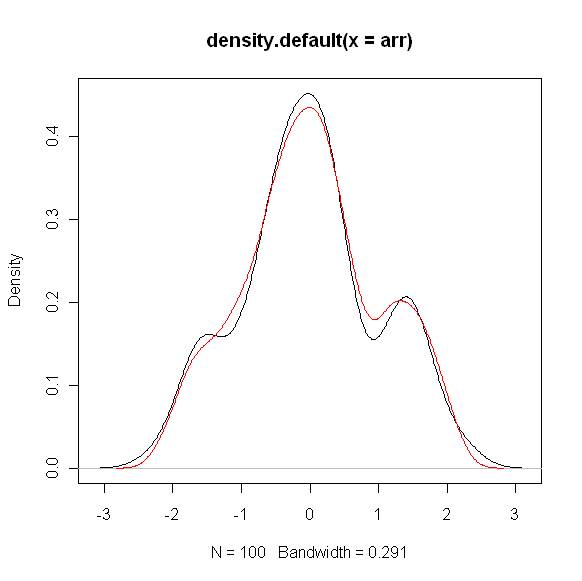Say I have the following sample:
-0.38848247;0.21655804;-1.08211969;0.00369104;0.0993393;0.25531731;1.40574444;-1.80271115;-0.58780605;-0.35026458;0.67197532;-1.29654652;-0.58874467;-0.4004176;1.46242829;0.83946654;-0.24861179;-1.604154;1.53555232;1.45589014;-0.52092604;1.65504054;0.12854317;1.66771236;1.47964458;-1.55677722;-0.40070632;-0.41957953;0.37803884;0.45349904;1.18265468;1.43979945;-1.55395031;0.01054229;0.48887945;0.12949194;-0.40283111;1.2998402;-1.02205575;-0.34370088;0.22117962;0.52840463;-0.9584811;1.22482249;-1.51189671;0.372597;1.68446854;-0.74440632;1.33920212;0.18072373;-0.35813474;0.39400846;1.18971633;1.02192759;-1.90422461;0.18459334;0.18096905;-1.73870267;1.57349896;-1.05632536;0.1864611;-1.49696658;0.51070568;-2.25007651;-0.64768552;1.80404194;2.25164576;-0.07925576;-0.83550267;-1.65513631;0.25913869;0.36030077;-0.09006407;-1.64359237;-0.1312756;-0.13790883;-0.09940115;-0.02089164;-0.60924589;-0.05451811;2.11736111;-1.40329353;-0.71788744;-0.45888623;-0.75608368;0.45762458;-0.24299548;-0.29224218;-1.0488731;-0.62028903;-0.08257067;0.92297771;0.2964071;-0.02598973;-0.20439059;-0.25195469;0.20572878;-0.49343988;0.25886695;1.20595313
How can I simulate random variables that would have the same density function as that of the above sample? (i.e same law)
A quick and dirty solution is to perform a uniform random selection out of this sample, but I am interested in more sophisticated methods. Any ides? literature references?

